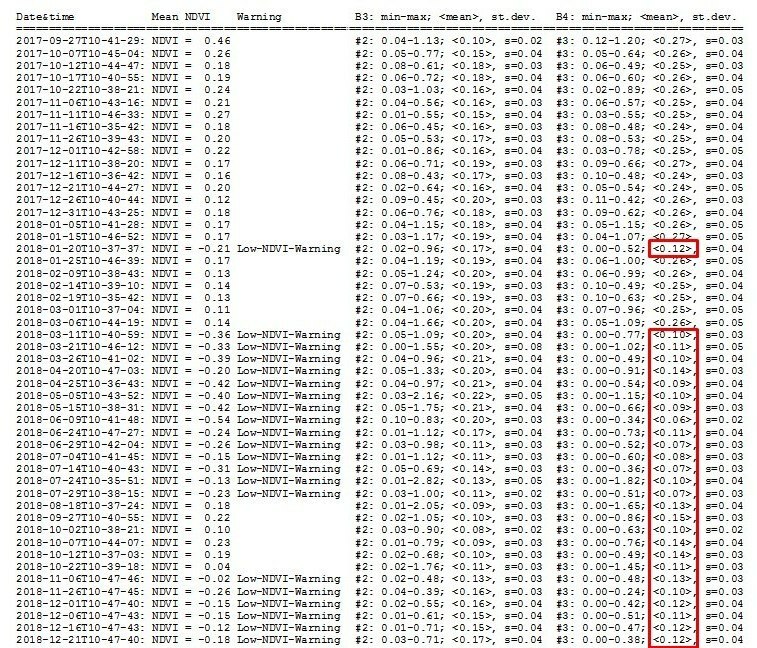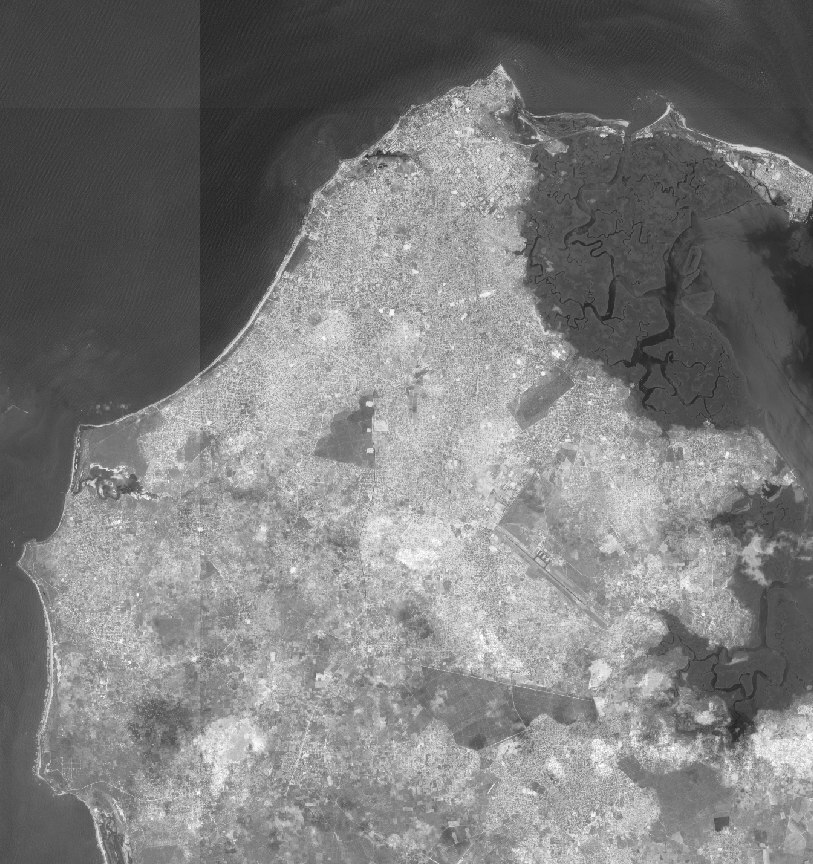Hi everyone!
For the timespan 2015-2018 I have successfully downloaded 10-m S-2 bands (02=B,03=G,04=R,08=NIR) and corresponding NDVI (configured directly in configurator) for some African countries, applying Sinergise’s atmospheric correction filter ATMCOR.
In the ATMCOR-corrected values of NIR band there is a significant drop from around March 10, 2018, onwards. Due to this anomaly in NIR band the NDVI values are completely wrong (the mean NDVI value of the 50x50 km2 area may be as low as -0.60, which is not possible for such diverse landcover).
Other facts:
- The same anomaly is not found in the ATMCOR-corrected images of same African areas in previous years 2015-2017
- The same anomaly is not found in the non-atmosph.-corrected images of same African areas in the ‘problematic’ year 2018
- The same anomaly is not found on some test images of Slovenia in 2018
- I am not aware that Copernicus did some changes in the processing chains in March 2018 (I far as I understand the processing baseline version 02.06 is from October 2017, while 02.07 is from November 2018)
Below I attach an example of mean NDVI and statistics of Red and NIR bands for some region of Burkina Faso (timespan 2017-09 to 2018-12; approx center location in UTM 30 N: 450000.0, 1380000.0)
Best regards, peter




